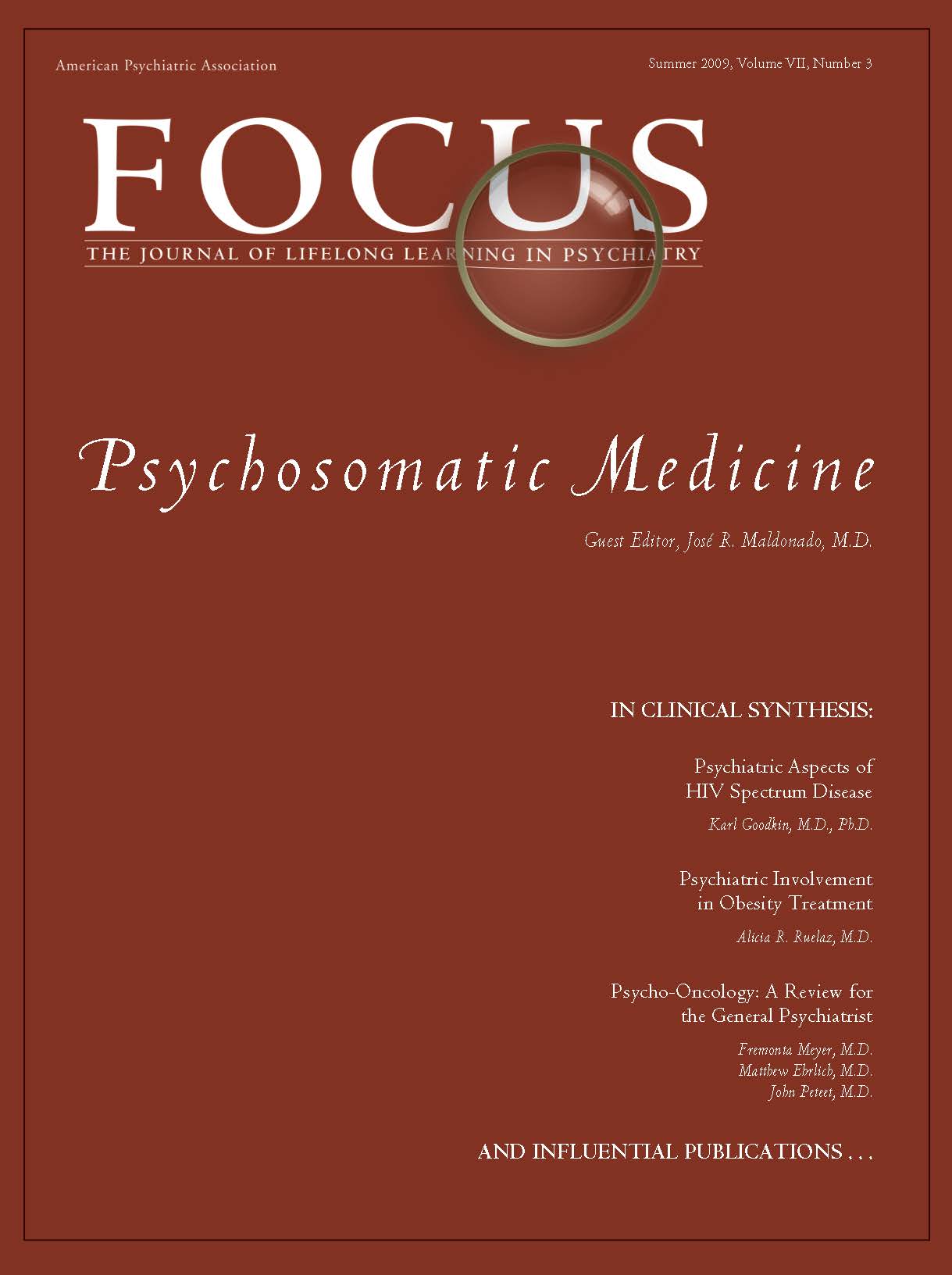Disorders associated with depressed mood have been estimated to occur in a majority of HIV-infected patients over the course of their infection. When an HIV-infected patient is confronted by the first symptoms referable to HIV, which are frequently not AIDS-defining symptoms, the patient's shell of optimism that she or he will never have a symptom is cracked. The resulting future uncertainty spawns an increased frequency of depressive spectrum disorders, including adjustment disorder, major depressive disorder, and dysthymic disorder. Recently, a prospective study confirmed a relationship between the history of symptomatic HIV infection and subsequent major depressive disorder in HIV-infected patients (
23). Physical and psychological symptoms are also associated with an elevated level of suicidal ideation, which remains a concern in the HAART era (
24). Further, elevated physical symptom burden is associated with psychoactive substance use and an elevated pain level (
25). Thus, the patient must learn a way to adjust to the increased level of uncertainty that is associated with an elevated physical symptom burden. Of note, persons with the triple diagnosis of a psychiatric disorder, a substance use disorder, and HIV/AIDS are particularly disposed to major depressive disorder, with 72.9% of this group qualifying for this diagnosis in one recent study (
26). In the differential diagnosis of depressive disorders in HIV infection, one must include disorders due to HIV infection itself (including HIV wasting syndrome and early HAD) as well as toxicities of medications prescribed to control HIV infection or its associated conditions (e.g., interferon-α for concomitant hepatitis C virus infection). Concomitant medications may also show salutary effects for depressive spectrum disorders, such as testosterone treatment in the setting of testosterone deficiency (which also treats fatigue). Likewise, ketoconazole, an antiglucocorticoid drug used for control of candidiasis, has been associated with decreases in major depressive disorder (
27), as has dehydroepiandrosterone, another glucocorticoid antagonist, specifically in subsyndromal major depressive disorder in HIV-infected persons (
28). Early HAD, presenting with apathy, lethargy, and social withdrawal, may be confused with major depressive disorder. However, the cognitive symptoms of helplessness, hopelessness, and low self-worth are generally absent, as are the primary affective symptoms. Regarding the impact on HIV disease itself, major depressive disorder may be treated with the same medications that would be indicated outside of HIV infection. However, important considerations are side effect profiles, the potential for drug interactions, and the neuroinflammatory impact of major depressive disorder itself. Regarding side effect profiles, in the patient manifesting with psychomotor retardation, activating antidepressants without effects on the CYP isoenzyme system in the liver, such as venlafaxine, may be preferred. Of the SSRIs, paroxetine has been favored as well as citalopram. Fluoxetine should be avoided because of its long half-life and its metabolism by both CYP 2D6 and 3A4 isoenzymes, which are also used by the protease inhibitors and the non-nucleoside reverse transcriptase inhibitors, potentially leading to drug interactions. Bupropion should be avoided because of its seizure diathesis combined with the potential that HIV-infected patients may manifest this diathesis at a low dose, given that HAD, for example, is associated with an increased frequency of seizures. The psychostimulants may be useful as a second-line option for the treatment of depressive disorders, particularly if there is concomitant neurocognitive impairment. In addition, testosterone deficiency should be assessed and treated in the setting of depressive disorders among HIV-infected persons. Finally, the relief of major depressive disorder itself may be expected to be associated with a reduction in proinflammatory cytokines in the brain (e.g., tumor necrosis factor-α, interleukin-1, and interleukin-6) (
29). This neuroinflammatory impact of major depressive disorder could contribute to HIV-associated neurocognitive disorder pathogenesis, which may be alleviated by the successful treatment of major depressive disorder.

